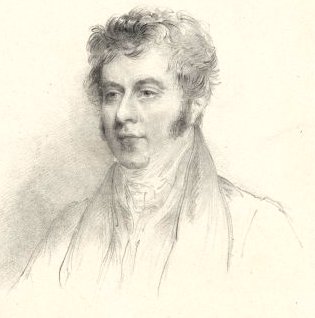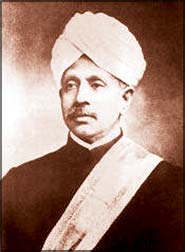By P.K.Balachandran
20 January 2024
Changing names of places and roads bearing the names of foreign rulers is common in countries that had gained independence. This could be justified in some cases, as in the change-over from Horton Place to Sir Ponnambalam Arunachalam Mawatha in Colombo-7.
Arunachalam was a resident of Horton Place. But in most cases, the personages displaced get driven into oblivion despite their contribution to society and get erased from history. The change-over from Horton Place to Sir Ponnambalam Arunachalam gives an opportunity to recognize the contribution of both Sir Robert Wilmot Horton, Governor of Ceylon between 1831 and 1837, and Sir Ponnambalam Arunachalam, lawyer, educationist, public intellectual and political leader in late nineteenth and early twentieth Centuries.Both were in the forefront of Ceylon’s political and social development in their respective eras.
Sir Robert Wilmot Horton

Educated in Eton and Oxford, and with an interest in democracy, Horton was posted as Governor to implement the 1833 Colebrooke Commission’s report on constitutional reforms.The report envisaged a Legislative Council of nine officials and six non-officials. The non-officials were European merchants and native Ceylonese. The non-officials were nominated by the Governor, not elected. The Legislative Council could only debate matters brought before it by the Governor, not initiate legislation. According to H.A.J.Hulugalle (British Governors of Ceylon, Colombo 1963) Horton was committed to democratization, but he had difficulty choosing non-official members as, in his view, no native Ceylonese was fit to be in the Council.
The local European merchants showed no interest in joining the council as there was no payment involved. But Horton himself had a dim view of the merchants as they were no more than commission agents for British companies with no interest in improving matters in Ceylon.The lack of enthusiasm and inability to get suitable persons meant that when the Council met for the first time in 1834, there was not a single non-official. They were join later.Horton used the Legislative Council to the fullest, abolishing forced labour and repealing the law forbidding Muslims and Chettiars (a merchant class from Tamil Nadu) from buying land in Colombo. He also abolished the government’s monopoly over cinnamon.
All these helped boost trade and economic activity.The foundation of a judiciary was laid with the establishment of a Supreme Court and District Courts. A Board of Education was set up in 1834. The Colombo Academy (the forerunner of Royal College) was set up in 1836. In the six years Horton was in Ceylon, he built a number of roads using the good income from pearl fisheries.Horton gave a boost to the local media too. He wrote for the Colombo Journal (a government-owned newspaper) under various pen names. He was perhaps acerbic in his comments, and the paper had to be closed in 1837 on the orders of the Home government.
Sir Ponnambalam Arunachalam

Like Horton, Sir Ponnambalam Arunachalam also came from a privileged background. After studies in Cambridge he joined the Ceylon Civil Service.
According to Speeches and Writings of Sir Ponnambalam Arunachalam edited by H.Kumarasingham (CPA, Colombo, 2019), Arunachalam won plaudits from The Times of London for conducting the census of 1901. The paper described him as the “most comprehensive authority on the ethnology of Ceylon and of its varied people, their history, their religions, languages and literature.”In 1910, he brought out A Digest of the Civil Law of Ceylon which charted the rich and diverse legal traditions of the country. Arunachalam was the prime mover of the Ceylon University Association formed in 1906 to create a university on the lines of Cambridge. He also authored Sketches of Ceylon History, which showed the multi-civilizational splendour and significance of pre-European Ceylon.
Arunachalam was radical even as a Civil Servant. He published two articles in the Ceylon Observer in 1902 under the pseudonym ‘Reform’, which strongly advocated that Ceylon was ‘ripe’ for self-government, when few would have dreamt of it.After retirement in 1913, Arunachalam plunged headlong into public service. He became the first Ceylonese to be President of the Ceylon branch of the Royal Asiatic Society in 1916. He was especially interested in the ancient ‘great chronicle’ the Mahavamsa.Kumarasinghm says: “Like his famous cousin, Ananda Coomaraswamy, he soaked in and savoured eastern art, philosophy, and literature. However, this and his eloquent attacks on colonial rule as practiced in Ceylon, did not lead to callow denunciations of the West or what it represented. Indeed, as Robert Aldrich has argued, despite his coruscating critiques of British imperialism and Western commercialisation, he never rejected Europeans, European cultures or the forms of democratic government that he witnessed in Britain.
Political Leadership
Arunachalam was a fierce nationalist. “Ceylon is no pauper begging for alms. She is claiming her heritage,” he asserted. He was a driving force behind the formation of the Ceylon Reform League and Ceylon National Association, and finally, the Ceylon National Congress. He followed the Indian National Congress to “fashion a Ceylonese nationalism that promoted interethnic unity.”Kumarasingham reproduces a hard hitting speech by Arunachalam at the Ceylon National Congress on August 17, 1920, in which he said that it was Ceylon’s misfortune that the Colonial Office was so ill-informed of Ceylon’s needs and conditions and indifferent to its wishes. He mocked Sir William Manning, who was the Governor then, saying that Manning “belonged to the time before the Flood”.By temperament and training Manning was “absolutely impervious to new ideas or to the spirit of the times.

He might make a passable Governor of a savage region in Africa, but is quite out of place in Ceylon,” Arunachalam added.The Ceylon National Congress, under Arunachalam’s Presidentship wanted the Colonial Office and Governor Manning to institute reforms on the pattern of the Montague-Chelmsford reforms in India. But Manning was stonewalling it.For this, Arunachalam blamed the Ceylonese too. They were too divided for any meaningful action, he pointed out. There were multiple clashing interests. Europeans, Burghers, Mohammedans, Indians, the Chamber of Commerce, the Low Country Products Association, all clamouring for representation competitively. Manning complained about “squabbling” Ceylonese.Arunachalam also regretted that the reform movement excited only the educated. Like Gandhi in India he was for mass mobilization to achieve national ends.“Our Reform propaganda, too, has scarcely touched the masses of the people though they are most vitally concerned.
The Lanka Mahajana Sabha and the Workers’ Federation, the only bodies claiming to represent them, have great possibilities but are hardly yet on their feet. The movement has been mainly confined to the English Educated Classes and the workers are lamentably few. Though these have worked with zeal, self-sacrifice beyond words, they have been much hampered by the apathy of many professed reformers and lack of funds. Some men of influence in our party have little trust in the masses of the people and regard them as only fit subjects for a parental despotism.”“The Congress (CNS) itself has been obliged to whittle down its demands and to hedge them round with so many safeguards and checks as to imply that we had little confidence in ourselves; and we could hardly expect the Colonial Office to have more confidence in us,” he said.Governor Manning, who was totally opposed to reforms, encouraged the Kandyan Sinhalese to demand separate representation so that the Low Country Sinhalese would not dominate the Council.
Manning introduced a system by which if one were to stand for election from the Western Province, one had to be a local resident. This was a ploy to keep influential non-resident people out. Later, Manning said he would the substitute residential qualification by a property qualification.Piqued by Manning’s prevarication, Arunachalam campaigned for an agitation and a boycott till Manning met the CNC’s demands. But there were virtually no takers for agitations. Terms like “Home Rule” and “Swaraj” were anathema in the CNC as these smacked of Indian influence. When the CNC’s Presidency went to Sir James Peiris, a conservative, agitations were rejected emphatically.Before the 1921 Legislative Council elections, Arunachalam had asked James Peiris to allocate the Colombo Town seat to him in accordance with an agreement reached during the formation of the CNC. But Peiris turned down the request saying that acceptance would mean the acceptance of communal representation.
Arunachalam was distressed over the betrayal, writes T.Sabaratnam, the veteran journalist. The veteran Ceylonese leader announced his resignation from the CNC and then formed a conservative Tamil party. He died in Madurai in 1924.





